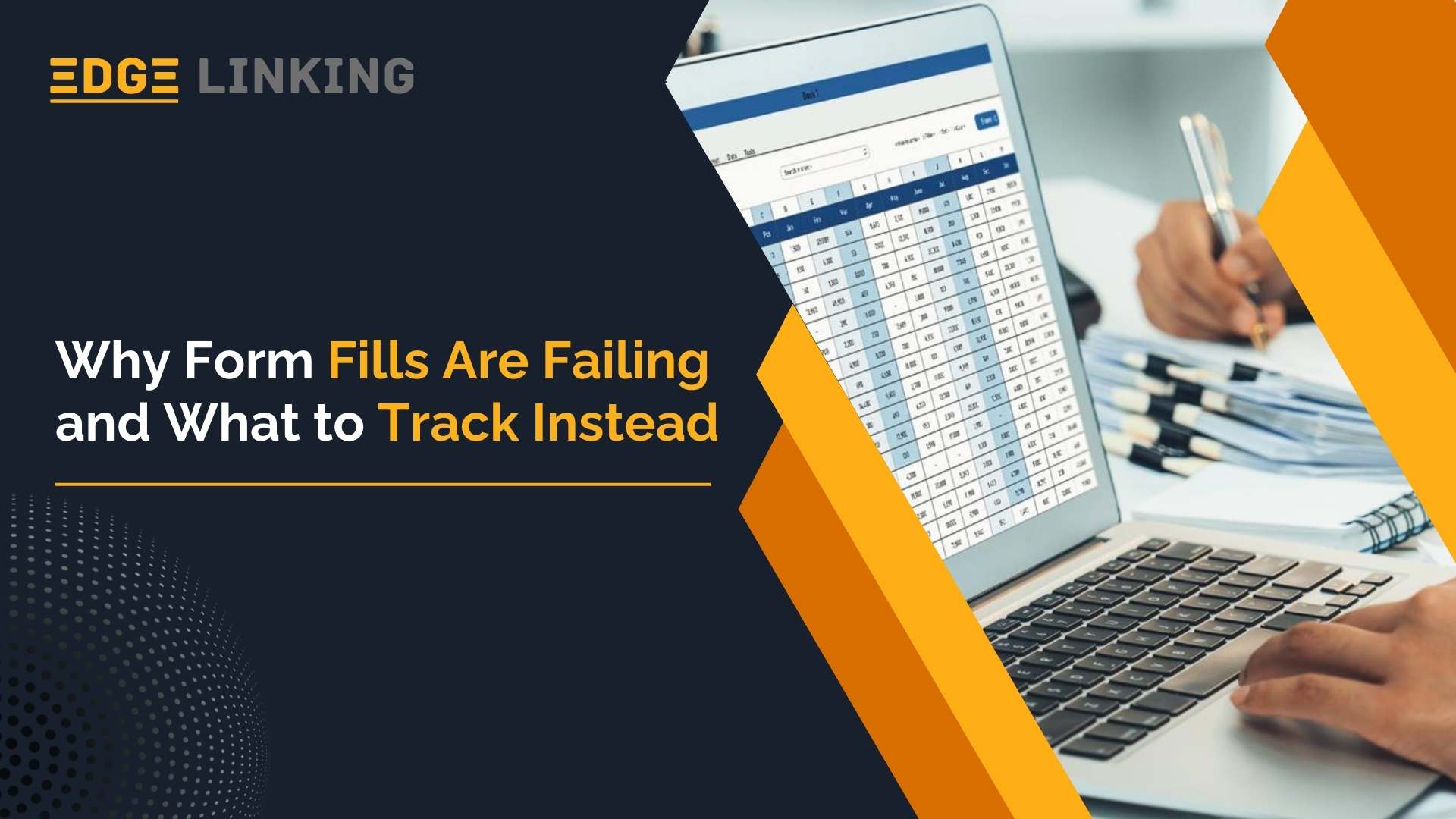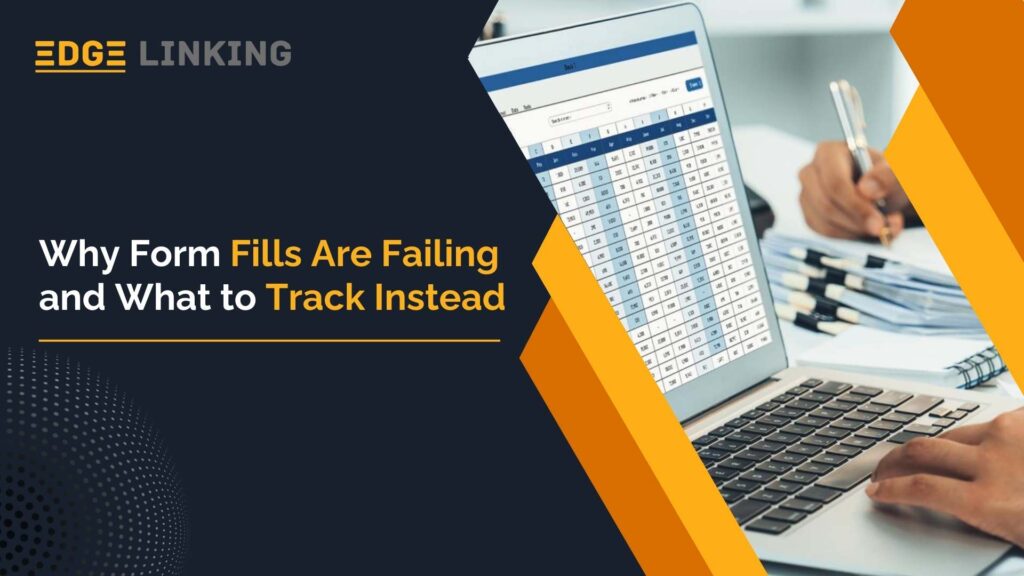Your marketing team is running a campaign. The ads get clicks, the landing page attracts attention, and visitors fill out forms. Yet, weeks later, sales teams give feedback that the leads are not converting to opportunities. Despite the form submissions, it doesn’t lead to conversion.
Tracking form fills alone limits conversion because it overlooks how prospects interact with your brand. For example, a prospect might download a whitepaper but never revisit your site. At the same time, another might watch a product demo, engage with blogs, and attend a webinar without filling out a form. Which of these signals should carry more weight in your conversion metrics? Clearly, the latter tells a stronger story of buying intent.
This article will discuss why you need more metrics to track your conversion, along with form fills.
Why Form Fills Are Failing to Track Conversions
Here are the reasons why form fills don’t result in conversions.
1.Form Fills Capture Activity, Not Intent
A form submission often reflects curiosity rather than buying intent. For example, a prospect may fill out a form to access a whitepaper, but that doesn’t necessarily indicate they are evaluating solutions. Treating all form fills as qualified leads creates a misleading pipeline. For form conversion optimization, you need to distinguish between interest and a buying signal.
2.Quality of Leads is Overlooked
Form fills don’t prove whether the lead matches your ICP. Sometimes competitors or non-decision makers fill out forms to access gated content. This leads to wasted sales resources chasing prospects who are unlikely to convert. Conversion metrics that emphasize engagement depth and account fit provide more insights than form fills.
3.Forms Miss Multi-Touch Journeys
Buying decisions involve multiple stakeholders and touchpoints across weeks or months. A single form submission rarely captures the journey. For instance, a procurement manager might never complete a form but actively engage with webinars, case studies, and product demos. Relying on forms alone weakens form conversion optimization strategies.
4.Declining Form Engagement Due to Buyer Fatigue
Today’s buyers are wary of sharing details unless there’s clear value. With privacy concerns and content saturation, many prospects avoid forms altogether, preferring to engage in other ways. This results in gaps in tracking, making conversion metrics incomplete if they depend solely on forms.
5.Misalignment Between Marketing and Sales
Sales teams might find form-based leads not enough. For example, marketing might celebrate 500 form fills from a campaign, but sales discovers that only 5% were serious prospects. This misalignment underscores the need for conversion metrics.
6.Missed Opportunities in Behavioral Data
Organizations that focus only on form fills overlook valuable behavioral data, including repeat website visits, time spent on solution pages, and interactions with ROI calculators. These signals often reveal intent more than form fills. Integrating such metrics into form conversion optimization creates a better view of the buyer journey.
Conversion Metrics You Need to Track
Here are the metrics that you need to track for conversion.
1.Account-Level Engagement
Tracking engagement across an account, such as multiple stakeholders from the same company interacting with webinars, whitepapers, and product pages, provides richer conversion metrics.
For instance, if three decision-makers from a target account engage over a month, that signal has more value than one form submission from a junior contact.
2.Multi-Touch Attribution
Buyer journeys are scattered across email, social, events, and website visits. Tracking the sequence and influence of these touchpoints provides more valuable insights than focusing solely on the last form filled.
For example, a prospect may attend a webinar, interact with an ABM campaign, and only later request a demo. Conversion metrics that recognize this progression provide an accurate picture of the pipeline.
3.Buying Signals
Actions such as returning to the pricing page, using ROI calculators, or sharing gated content within their organization indicate stronger purchase intent than form fills. For instance, if a prospect shares a case study link internally, it suggests interest that goes beyond individual curiosity.
4.Sales-Qualified Conversions
You need to drive revenue, not just form activity. Tracking the percentage of leads that convert into sales-qualified opportunities offers an alignment metric between marketing and sales. In B2B, this ensures that conversion metrics reflect pipeline contribution and business impact.
Form Tweaks to Optimize Conversions
Here are some of the approaches to optimize your form fills for better conversion tracking.
1.Create a Form with Fewer Fields
Long forms discourage prospects from completing them. Asking for 8–10 fields upfront often leads to abandonment. Instead, focus on essential fields such as name, email, and company, and use progressive profiling later to collect more details.
2.Prioritize Value Exchange
Offering generic whitepapers in exchange for detailed forms no longer works. Instead, provide high-value assets such as ROI calculators, industry-specific benchmarks, or access to expert sessions. For example, a cybersecurity firm can see stronger conversion metrics by gating a live threat-analysis webinar rather than a generic eBook.
3.Use Smart, Dynamic Forms
Implement adaptive forms that recognize returning visitors and pre-fill known information. For instance, if a contact from an account has already shared their company name, the following form should only ask for new data points. This enhances user experience and supports smarter form conversion.
4.Test Placement and Design
The placement of forms on a landing page matters. A form hidden at the bottom of a long page may lose visibility. Similarly, poor design can make the form feel like a barrier. In software demos, embedding a minimal form near high-value content like a product video can lift conversion metrics.
5.Align Forms with Buyer Journey Stages
Asking for too much information too early creates resistance. For example, in early research stages, prospects may only be willing to provide an email to access a trend report. Closer to purchase, they may accept a more detailed form for a custom demo. Aligning form length with the buyer’s stage ensures better form conversion optimization.
6.Add Clear Trust Signals
Buyers, especially in regulated industries, are cautious about data sharing. Including privacy or security certifications or even a short note on data usage improves trust and encourages completion. This simple tweak can improve conversion metrics in industries like finance and healthcare.
Conclusion
Form fills are not failing because they are irrelevant; they still have a place. They are failing because businesses are treating them as the only signal of success. If your organization is still using form fills as the primary yardstick for success, you’re missing the bigger picture. The future of conversion metrics lies in capturing intent, not just activity.






